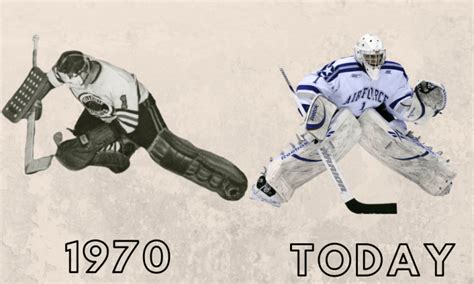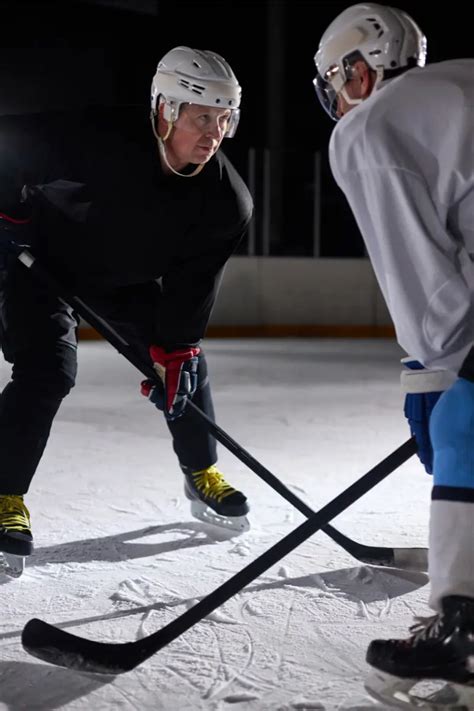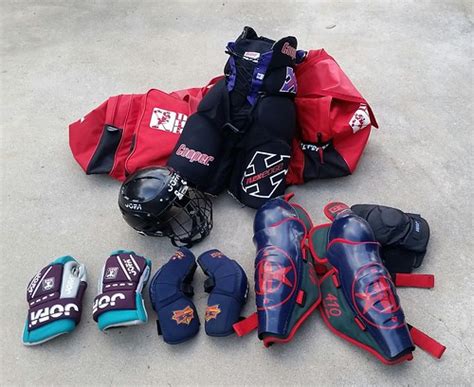Explore the evolution of ice hockey equipment, from basic gear to technological advancements, safety enhancements, and future trends shaping the game today.Hockey, a sport steeped in history and tradition, has witnessed remarkable advancements in equipment over the years, transforming the game for both players and fans. From the humble origins of basic gear to today’s high-tech innovations, the evolution of hockey equipment reflects not only changes in technology but also a growing emphasis on player safety and performance. As enthusiasts, we recognize the importance of having the right gear to enhance our gameplay while prioritizing our well-being on the ice. In this article, we’ll delve into the journey of hockey equipment, exploring the impact of innovative materials, safety improvements, and future trends that promise to redefine the way the game is played. Join us as we trace the fascinating evolution of hockey gear and discover what lies ahead in this timeless sport.
The Early Days: Basic Gear for Ice Hockey Enthusiasts
The origins of ice hockey date back to the 19th century, where the game was played in various informal settings. As a result, the equipment used by early players was rudimentary and often homemade. Basic gear for ice hockey enthusiasts comprised items that provided minimal protection and functionality.
In the early days, players often wore thick woolen sweaters and pants, along with sturdy boots that offered some grip on the ice but little in terms of ankle support. The stick was typically crafted from wood, reflecting the player’s craftsmanship, with varying lengths and curves based on personal preference.
Below is a summary of the basic equipment used during the early days of ice hockey:
| Equipment | Description |
|---|---|
| Skates | Leather boots with metal blades, providing limited support and performance. |
| Sticks | Handcrafted wooden sticks with various shapes but no standardized design. |
| Protective Gear | Minimal padding, often just a homemade helmet or none at all. |
| Jerseys | Simple woolen sweaters that lacked modern moisture-wicking materials. |
The focus on basic gear in the early days of ice hockey reflected the grassroots nature of the sport, where creativity and resourcefulness played significant roles. Players relied on their skill and passion rather than the sophisticated gear we see today. This period laid the foundation for the evolution of hockey equipment, influencing future designs that prioritized safety, performance, and innovation.
Innovative Materials: How Technology Shaped The Evolution of Equipment
Throughout the years, The Evolution of hockey equipment has been significantly influenced by advancements in materials science and technology. Early hockey gear consisted primarily of leather and wood, which provided minimal protection and performance benefits. However, with the introduction of synthetic materials and composite technologies, the landscape of hockey equipment has transformed dramatically.
One of the major breakthroughs was the adoption of high-performance plastics and foams for protective gear. Companies began using lightweight materials such as polypropylene and EVA (ethylene-vinyl acetate) in helmets and padding, allowing players to maintain agility while ensuring safety. These innovations reduced the overall weight of the equipment, enabling players to perform at higher levels without being burdened by unnecessary weight.
Additionally, the development of composite materials for sticks revolutionized the sport. Initially made of solid wood, sticks evolved into sophisticated designs utilizing carbon fiber and Kevlar. This shift not only made them lighter and stronger but also allowed for better energy transfer during shots, enhancing the overall performance of players on the ice.
The integration of moisture-wicking fabrics has also played a crucial role in enhancing the comfort and usability of hockey gear. Today’s jerseys and underlayers are designed to pull sweat away from the body, ensuring that players stay dry and comfortable during intense games. This focus on player comfort has contributed to longer-lasting performance and reduced fatigue.
In recent years, technology has further advanced with the introduction of smart fabrics embedded with sensors capable of tracking player performance metrics. These include speed, distance covered, and even biometric data, providing insights that can help athletes and coaches optimize training and gameplay strategies.
As we look ahead, innovations in materials will continue to push the boundaries in The Evolution of hockey equipment, offering players unprecedented levels of safety, comfort, and performance enhancement.
Safety First: Enhancements in Protective Gear Over The Years
The safety of hockey players has always been a primary concern for equipment manufacturers. Over the years, The Evolution of protective gear has dramatically transformed the way players approach the game. Modern advancements have not only improved comfort and fit but have also significantly enhanced safety.
In the early stages of hockey, players relied on minimal protective gear. Traditional items included cotton pads and leather helmets, which offered little in the way of safety. However, as understanding of sports injuries increased and technology advanced, so too did the gear.
Below is a table illustrating key enhancing features in protective gear over the decades:
| Decade | Key Enhancements |
|---|---|
| 1970s | Introduction of fiberglass helmets and basic shoulder pads. |
| 1980s | Full-face shields became popular, improving jaw protection. |
| 1990s | Lightweight materials such as Kevlar began to be used for chest protectors. |
| 2000s | Incorporation of moisture-wicking fabrics and customized padding. |
| 2010s | Advanced impact-absorbing materials, including foam composites. |
The focus on head injuries, especially concussions, has led to regulations mandating improved helmet standards. Current helmets are designed with multi-layered construction to absorb impact more efficiently.
Additionally, innovations such as neck guards and padded undergarments have gained traction as players become more aware of potential injuries. Protective gear is no longer just an afterthought; it is a critical element of the game meant to ensure player safety.
The evolution of protective gear in hockey is a testament to how far the sport has come. As technology progresses, we can expect further enhancements that prioritize player safety while maintaining performance and comfort on the ice.
Performance Gear: The Evolution in Skates and Sticks for Players
The evolution of hockey equipment has particularly impacted performance gear, with skates and sticks evolving to meet the demands of modern play. From their origins in basic wooden constructions, both skates and sticks have undergone significant enhancements, becoming more specialized and high-performance with each passing decade.
Initially, hockey skates were simple leather boots with no specialized design. The introduction of the Evolution in blade technology allowed for improved edge control and faster speeds. Today’s skates feature advanced materials like carbon fiber and reinforced synthetics that enhance durability while reducing weight. The precision of fit has also improved remarkably with the introduction of heat-molding technologies that allow skaters to customize their skates for superior comfort and performance.
On the other hand, hockey sticks have transitioned from heavy wooden sticks to lightweight composite materials that provide increased flexibility and power in shots. The incorporation of advanced shaft shaping and blade construction has led to sticks that are not only lighter but also provide better puck control and shooting accuracy. Modern sticks often feature even more specialized designs tailored to specific playing styles, allowing for a greater level of personalization for players.
| Era | Skate Features | Stick Features |
|---|---|---|
| Early Years | Leather boots, basic blades | Solid wood, basic design |
| 1970s | Introduction of plastic materials | Wood with fiberglass reinforcements |
| 2000s | Carbon fiber technology | Composite with enhanced flex |
| 2020s | Heat-moldable fits, advanced materials | Customizable designs, enhanced control |
This journey from rigid, basic materials to highly engineered products reflects not only the evolution of sport itself but also the growing emphasis on performance enhancement and player safety. As players continue to push their limits, the equipment will no doubt keep pace, ushering in further innovations in both skates and sticks.
Future Trends: What’s Next in The Evolution of Hockey Equipment
As the game of ice hockey continues to adapt and grow, The Evolution of hockey equipment is poised to enter an exciting new phase. With advancements in technology, player safety, and performance optimization, the future of hockey gear holds great promise for players at all levels.
One notable trend is the integration of smart technology into equipment, which can provide real-time feedback on performance metrics such as skating speed, shot velocity, and even fatigue levels. Wearable devices and smart materials are becoming more common, allowing players to monitor their own performance and health data, which ultimately leads to better training and injury prevention.
Another significant development is the ongoing focus on sustainability within the sporting goods industry. Manufacturers are increasingly aware of their ecological impact and are seeking to create equipment using recycled and environmentally-friendly materials. This shift could redefine how hockey gear is produced and marketed, aligning with the values of the next generation of athletes.
Additionally, the design of protective gear is expected to evolve further with sophisticated impact-detection systems. These advancements would not only improve safety by potentially reducing concussions but also enable coaches and trainers to respond more swiftly to injuries during play.
Furthermore, customization will likely play a crucial role in the future of hockey equipment. Players may have access to 3D printing technologies that allow them to tailor their gear to their specific preferences and anatomy, enhancing both comfort and performance on the ice.
Overall, the future of hockey gear promises to be an exciting frontier that blends innovation in technology with player-centered design. As we watch The Evolution of hockey equipment, it is clear that these trends could significantly enhance both the safety and enjoyment of the game for players everywhere.
Frequently Asked Questions
What are some key milestones in the evolution of hockey equipment?
Key milestones include the introduction of hard-shell helmets in the 1970s, the development of lightweight composite sticks in the 1990s, and the transition to advanced protective gear using Kevlar and other materials in the 2000s.
How has the design of hockey sticks changed over the years?
Hockey sticks have transitioned from wooden models to lightweight composite materials, allowing for improved flexibility, durability, and shooting performance. The introduction of varied blade curves has also enhanced puck handling.
Why were helmets made mandatory in professional hockey?
Helmets were made mandatory in professional hockey due to increasing awareness of head injuries and concussions, aimed at improving player safety on the ice.
What advancements have been made in the protective gear used by players?
Advancements in protective gear include the use of materials like hyperlight foams, which offer better protection without sacrificing mobility, and features such as moisture-wicking fabrics for enhanced comfort.
How has goaltender equipment evolved over the years?
Goaltender equipment has seen increased size and padding over the years, with innovations such as the butterfly style pads that provide better coverage and mobility. Modern goaltenders now also use sticks specifically designed for better puck handling.
What impact have technology and materials had on hockey equipment?
Technology and materials have significantly impacted hockey equipment by enhancing performance, safety, and comfort. Innovations like carbon fiber and specialized foam have led to lighter, stronger, and more protective gear.
What role do player preferences play in the evolution of hockey equipment?
Player preferences play a crucial role in the evolution of hockey equipment, as feedback from players drives manufacturers to innovate and refine designs that cater to comfort, style, and performance.









